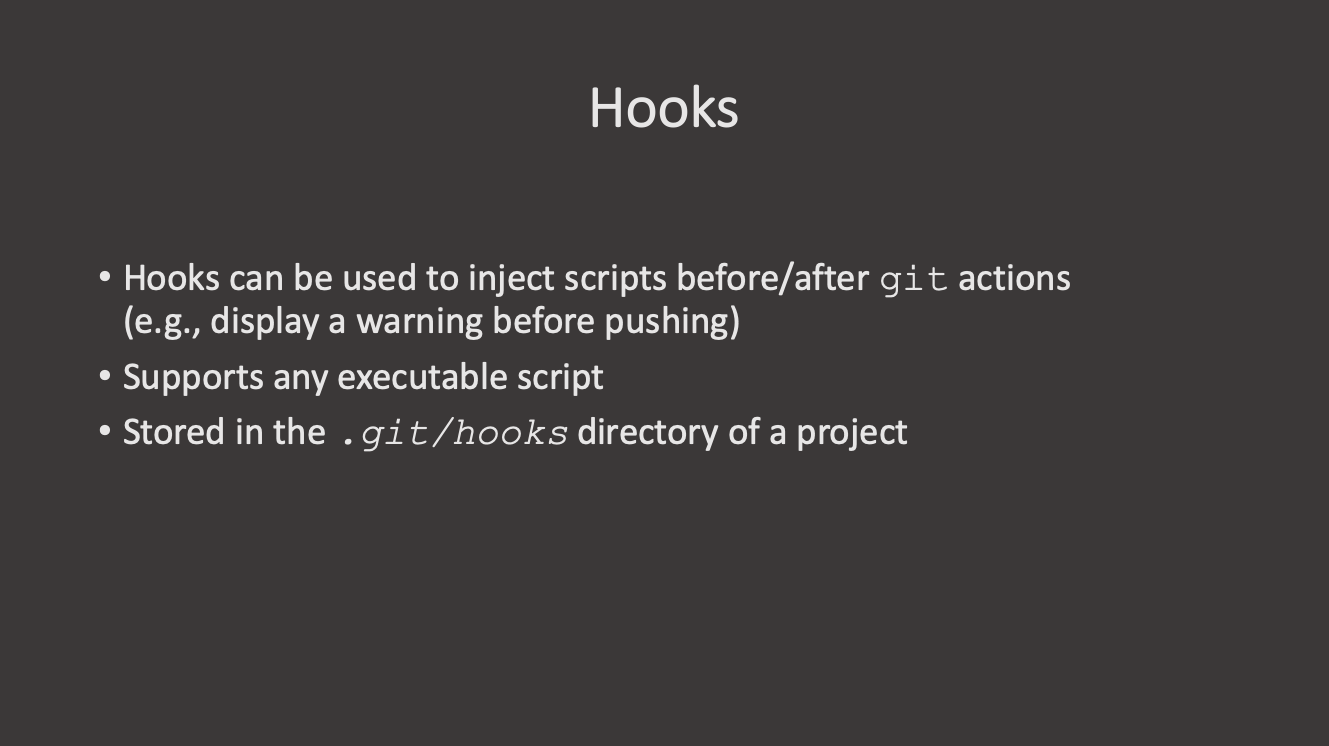Hooks and Actions
Overview
Teaching: 0 min
Exercises: 0 minQuestions
How do I automate my work locally?
How do I add automations to GitHub?
Objectives
First learning objective. (FIXME)
Git hooks are scripts that get run when a specific event occurs in git. The scripts can be written in any language and do anything you like, so any executauble script can be a hook.
Git hooks can trigger events on the server size or locally. Examples of local events that can trigger hooks include commit (pre- or post-commit hooks), checkout or rebase. Pre-commit hooks are perhaps the most common and useful ones: they trigger actions before the code is committed and if the hook script fails, then the command is aborted. This can be very powerful - you can automatically run linters, before the code is even committed.
List of pre-written pre-commit hooks: https://github.com/pre-commit/pre-commit-hooks
The executable files are stored in the .git/hooks/ directory in your project directory. A pre-commit hooks will be an executable file in this directory stored with the magic name pre-commit. Check the directory, there are already several examples. Let’s create a new one
touch .git/hooks/pre-commit
nano .git/hooks/pre-commit
And add the following text to it:
#!/usr/bin/env bash
set -eo pipefail
flake8 hello.py
echo "flake8 passed!"
Now let’s make hello.py:
touch hello.py
nano hello.py
And add some text to it:
print('Hello world!'')
The typo is on purpose. Add and commit it to the repository.
GitHub actions are the equivalent of serverside hooks on GitHub.
There are lots of things that can be done with GitHub actions: https://docs.github.com/en/actions
Here is an example of a simple cron job: https://github.com/mpi-astronomy/XarXiv

Materials: https://verdantfox.com/blog/how-to-use-git-pre-commit-hooks-the-hard-way-and-the-easy-way
Key Points
First key point. Brief Answer to questions. (FIXME)